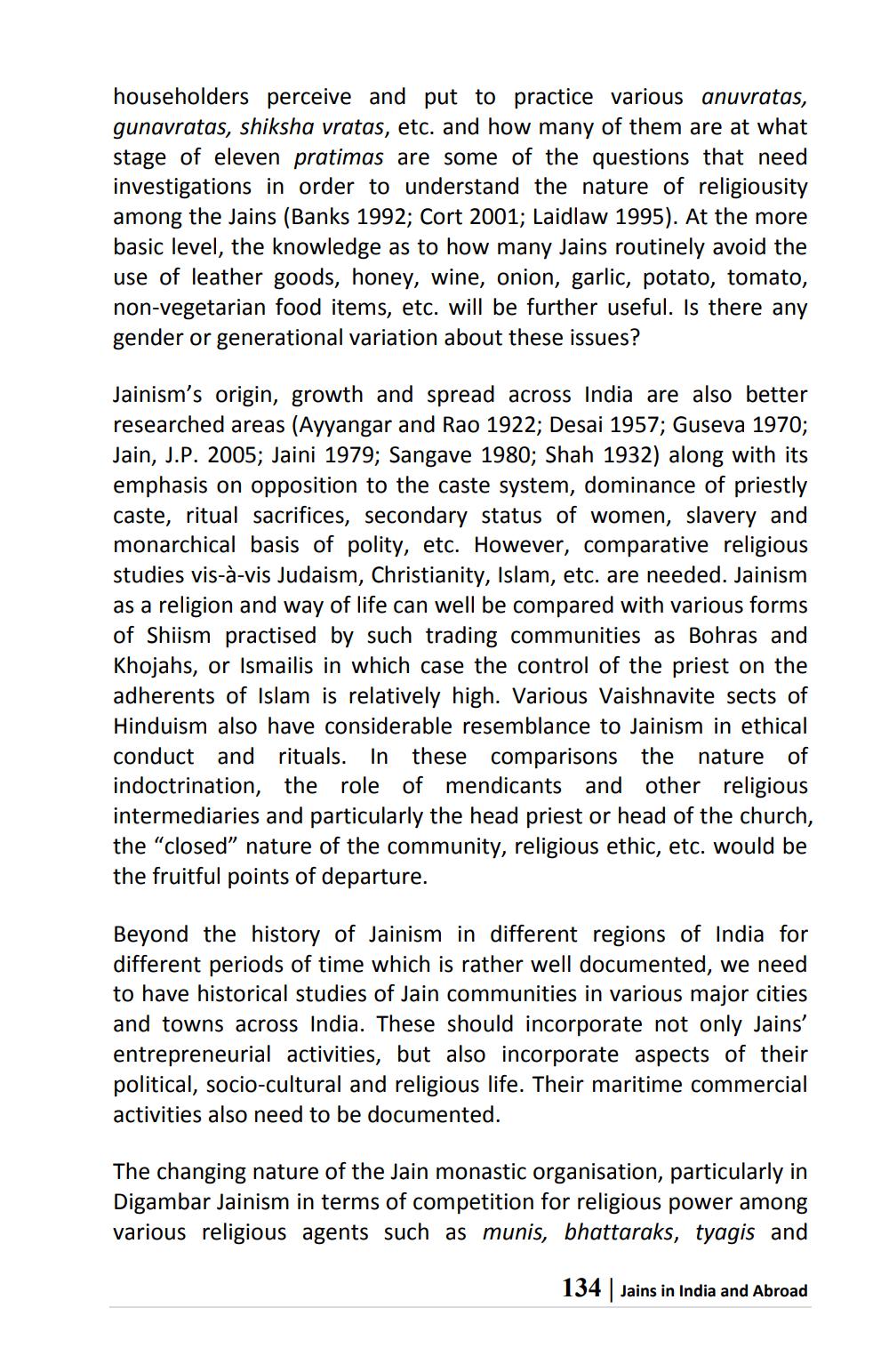________________
householders perceive and put to practice various anuvratas, gunavratas, shiksha vratas, etc. and how many of them are at what stage of eleven pratimas are some of the questions that need investigations in order to understand the nature of religiousity among the Jains (Banks 1992; Cort 2001; Laidlaw 1995). At the more basic level, the knowledge as to how many Jains routinely avoid the use of leather goods, honey, wine, onion, garlic, potato, tomato, non-vegetarian food items, etc. will be further useful. Is there any gender or generational variation about these issues?
Jainism's origin, growth and spread across India are also better researched areas (Ayyangar and Rao 1922; Desai 1957; Guseva 1970; Jain, J.P. 2005; Jaini 1979; Sangave 1980; Shah 1932) along with its emphasis on opposition to the caste system, dominance of priestly caste, ritual sacrifices, secondary status of women, slavery and monarchical basis of polity, etc. However, comparative religious studies vis-à-vis Judaism, Christianity, Islam, etc. are needed. Jainism as a religion and way of life can well be compared with various forms of Shiism practised by such trading communities as Bohras and Khojahs, or Ismailis in which case the control of the priest on the adherents of Islam is relatively high. Various Vaishnavite sects of Hinduism also have considerable resemblance to Jainism in ethical conduct and rituals. In these comparisons the nature of indoctrination, the role of mendicants and other religious intermediaries and particularly the head priest or head of the church, the "closed" nature of the community, religious ethic, etc. would be the fruitful points of departure.
Beyond the history of Jainism in different regions of India for different periods of time which is rather well documented, we need to have historical studies of Jain communities in various major cities and towns across India. These should incorporate not only Jains' entrepreneurial activities, but also incorporate aspects of their political, socio-cultural and religious life. Their maritime commercial activities also need to be documented.
The changing nature of the Jain monastic organisation, particularly in Digambar Jainism in terms of competition for religious power among various religious agents such as munis, bhattaraks, tyagis and
134 | Jains in India and Abroad




